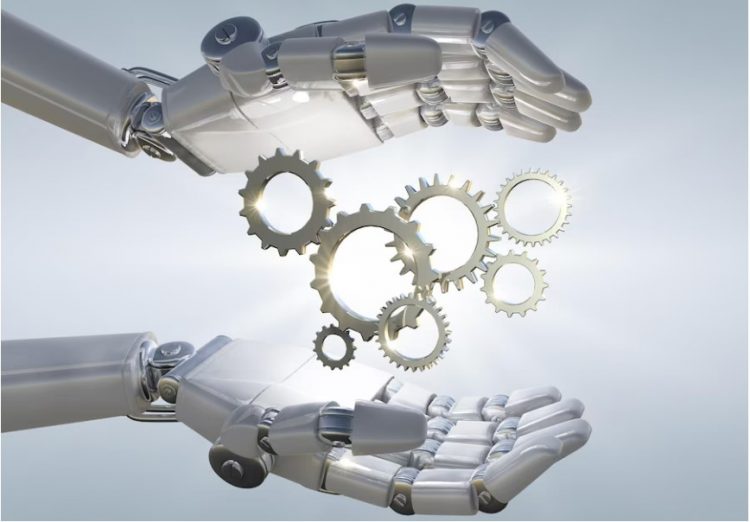The manufacturing industry has experienced significant technological advancements in recent years, with the development of robotics and automation. Robotics have transformed the manufacturing industry by increasing productivity, reducing costs, and improving product quality. This article will explore the different types of robotics used in manufacturing and their benefits.
Introduction
Robotics is a key technology used in manufacturing, and it has revolutionized the way manufacturers operate. Robotics has made production processes faster, safer, and more accurate and has helped manufacturers increase their output while maintaining quality. Several types of robotics are used in manufacturing, each with its unique features and benefits.
Industrial Robots
Industrial robots are the most commonly used robots in manufacturing. They are programmable machines that are designed to automate repetitive and dangerous tasks. The robotic arm has multiple axes of movement, enabling them to perform various tasks such as welding, painting, and assembling. Industrial robots can also work in hazardous environments where it would be dangerous for human workers to operate. The benefits of using industrial robots include increased productivity, efficiency, and safety.
Collaborative Robots
Collaborative robots, or cobots, are designed to work alongside human workers. They are equipped with sensors and cameras that allow them to detect the presence of humans and adjust their movements accordingly. Collaborative robots can perform tasks such as picking and placing, assembly, and quality control. They are designed to be easy to program and can be quickly reconfigured to perform different tasks. The benefits of using collaborative robots include increased productivity, improved worker safety, and the ability to work in small spaces.
Autonomous Mobile Robots
Autonomous mobile robots (AMRs) are designed to navigate and operate without human intervention. They use sensors and cameras to detect their surroundings and can be programmed to perform tasks such as material handling and transport. AMRs can also be equipped with robotic arms and grippers to perform more complex tasks. The benefits of using AMRs include increased productivity, flexibility, and the ability to work in dynamic environments.
AGVs (Automated Guided Vehicles)
Automated guided vehicles (AGVs) are mobile robots that follow pre-determined paths to transport materials and products. They can be programmed to follow specific routes, avoid obstacles, and navigate through complex environments. AGVs are commonly used in warehouses and manufacturing facilities to transport raw materials, finished goods, and waste. The benefits of using AGVs include increased productivity, reduced labor costs, and improved safety.
Drones
Drones are unmanned aerial vehicles used in manufacturing for tasks such as inventory management, monitoring, and inspection. They can fly to locations that are difficult for human workers to access, such as rooftops and high shelves, and can capture images and videos that can be used for analysis. Using drones in manufacturing includes improved safety, reduced costs, and increased efficiency.
Comparison of the Different Types of Robotics in Manufacturing
Each type of robotics has its unique features and benefits. Industrial robots are best suited for repetitive and dangerous tasks, while collaborative robots are designed to work alongside human workers. Autonomous mobile robots are ideal for dynamic environments, while AGVs are best for material transport. Drones are helpful for tasks that require aerial access and can capture data that can be used for analysis.
In conclusion, robotics has transformed the manufacturing industry by improving efficiency, productivity, and safety. The different types of robotics in manufacturing offer unique benefits and can be used for various tasks. Manufacturers should consider the specific needs of their production processes and choose the type of robotics that is best suited to their needs. Robotics are the future of manufacturing and will continue to play a critical role in the industry’s growth and success.
Examples of Successful Implementation
There are many successful examples of robotics in manufacturing. For example, BMW uses collaborative robots in their manufacturing plants to assist with the assembly of cars. The robots work alongside human workers, lifting heavy parts and performing repetitive tasks, improving productivity, and reducing the risk of injury. Amazon uses AGVs in their warehouses to transport products, reducing the need for human workers to manually move items. This has increased efficiency and reduced labor costs. Drones are also being used in manufacturing for inventory management and inspection tasks. For example, General Electric uses drones to inspect wind turbines, which has reduced inspection time and improved safety.
Challenges and Future Developments
While robotics has many benefits in manufacturing, some challenges must be addressed. One of the challenges is the initial investment required to implement robotics, which can be expensive. Additionally, robotics requires ongoing maintenance and updates, which can be costly. Another challenge is the need for skilled workers to operate and maintain the robotics.
In the future, robotics in manufacturing will continue to evolve and improve. Artificial intelligence and machine learning will be incorporated into robotics, allowing them to make decisions and perform tasks independently. The development of collaborative robots will continue to create robots that can work alongside humans more seamlessly. Advancements in sensors and cameras will also improve the capabilities of robotics, allowing them to perform more complex tasks.
Conclusion
In conclusion, robotics has revolutionized the manufacturing industry by improving efficiency, productivity, and safety. Several types of robotics are used in manufacturing, each with its unique benefits. Manufacturers should consider the specific needs of their production processes and choose the type of robotics best suited to them. While there are challenges to implementing robotics, the benefits outweigh the costs in the long run. The future of manufacturing is robotics and automation, which will continue to drive the industry’s growth and success













